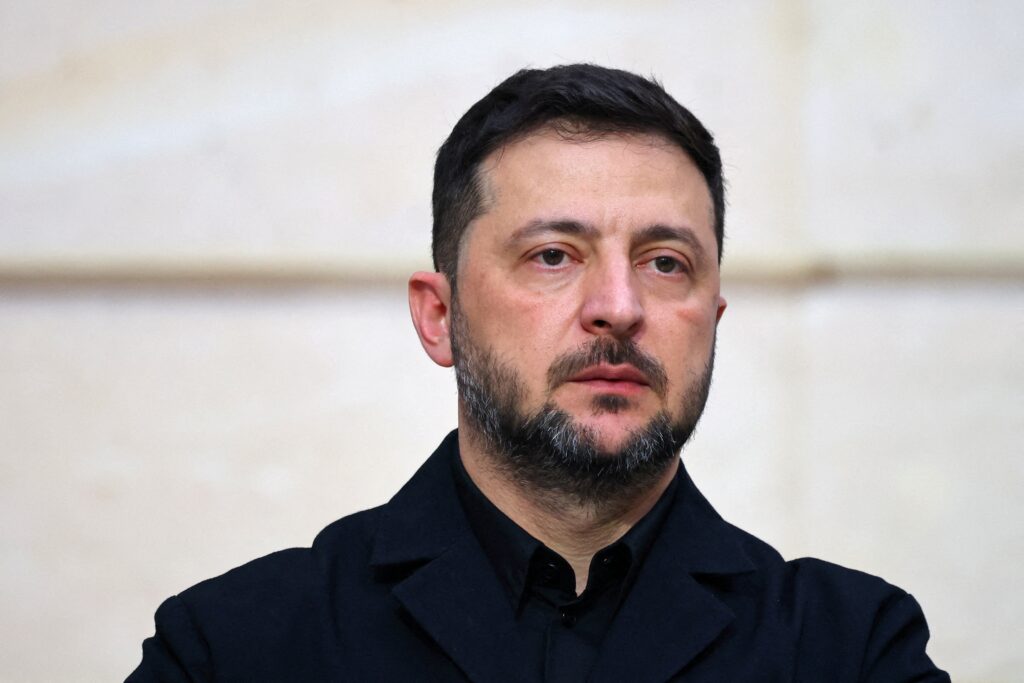KYIV — In Ukraine’s proud capital, the electricity is out for several hours each day. Life downtown hums along, with power still provided for critical infrastructure, and with most businesses long ago having installed generators and battery banks. But the mood is dark. Major cities are regularly pounded by Russian drones and missiles, and news from the front is discouraging. With a cold winter approaching, many Ukrainians are understandably feeling grim.
With all this as a backdrop, news of President Donald Trump’s 28-point peace plan for Ukraine landed like a Kinzhal ballistic missile on Wednesday night. The administration of Ukrainian President Volodymyr Zelensky, beset by a wide-ranging corruption scandal threatening to derail his presidency, reeled at the early media reports of the plan’s contents. One of Zelensky’s advisers, Mykhailo Podolyak, said it amounted to a demand for Ukraine’s “unconditional capitulation.” Friends in Kyiv were rendered speechless.
But the plan’s full text, which leaked late Thursday night, reveals a framework for getting to a decent, if unjust, peace. It’s ugly stuff, and Ukrainians are understandably still in shock. But the plan is not necessarily the disaster depicted in much Western media.
Ukraine would have to give up all of Donbas, including territories that Russia has not yet captured; it would have to enshrine in its constitution that it would not join NATO; and it would have to cut the size of its armed forces from between 800,000 and 850,000 to 600,000. Though there would be no foreign boots on the ground, the plan vaguely states that Ukraine would receive “reliable security guarantees,” and that should Russia invade, there would be a “coordinated military response.”
Such vagueness about security guarantees may sound disconcerting, but in truth it’s an invitation for Ukraine to flesh out what it needs before it will sign on the dotted line.
By Thursday night, Zelensky had received the plan in full and was sounding a less desperate note. In a statement released after meeting with a U.S. military delegation led by Army Secretary Daniel Driscoll, Zelensky said that he would discuss a path forward with Trump in the coming days. “We are ready for constructive, honest and swift work,” he said. Swift work will be needed: On Friday, The Post reported that Trump had given Ukraine until Thanksgiving Day to sign the deal.
An adviser close to Zelensky told me he saw Witkoff’s proposal as an opportunity — a starting point for hammering out a workable deal. He acknowledged that a final agreement may in some parts be tough for the Ukrainian public to accept, but he insisted that Ukraine must face reality and stop the bloodshed.
The most painful part will be the territorial concessions. Though Zelensky has not publicly said so, many around him have long known that such concessions are inevitable. Even ceding territories not yet conquered by Russia might be acceptable if the security guarantees are truly robust. The cap on military personnel is less of a problem, given that Ukraine is increasingly relying on drones as a force-multiplier anyway. And NATO membership and foreign boots on the ground are less important than having a 600,000-strong military armed to the teeth. I expect the Ukrainians to push hard behind the scenes for spending commitments from Western partners to make sure that happens.
Why not keep fighting? The bitter truth is that Ukraine is losing. Maybe it would take Russians a year or more to conquer the territory to be ceded right now, and the cost in Russian lives would be tremendous. But Putin has shown that he is willing to pay any human cost in pursuit of his goals, and over that same period Ukraine itself would suffer thousands of soldiers slaughtered. With a durable peace achieved soon, even if it is imperfect and unjust, reconstruction could begin and the 7 million Ukrainians living abroad might be tempted to return. In one or two years’ time, Ukraine could have lost the territory it is now being asked to cede, and facing even worse terms. In a world of awful options, it is not insane to try to come to a least-bad agreement right now.
Despite his constructive tone this week, Zelensky may find it difficult to maneuver. A burgeoning corruption scandal is threatening to weaken him dramatically. Last week, Ukraine’s National Anti-Corruption Bureau announced that it had uncovered a massive kickback scheme in Ukraine’s energy sector. Given that Ukrainians struggle with daily power outages, the news that top officials had been accused of siphoning millions of dollars from the state energy company revolted and embittered the public. Parliament, relegated to something of a rubber-stamp legislature under martial law, is showing signs of reasserting its power. Many of the peace deal’s provisions would require difficult votes, and some, like territorial concessions, would require a nationwide referendum. An unpopular Zelensky would struggle to make the sale.
Indeed, by releasing the peace plan at this moment, Trump may have thrown a political lifeline to those around Zelensky who are less open to a negotiated settlement with Russia. Kyiv is rife with unfounded rumors that the United States orchestrated the corruption probe to make the government more pliable. Hard-liners may try to exploit the growing sense among many Ukrainians that the U.S. is no longer a trustworthy partner. Zelensky himself may conclude that ginning up a conflict with Trump would help distract from the evolving corruption scandal that may yet implicate some of his most trusted ministers and aides.
On Friday night, Zelensky addressed the nation, and while acknowledging that the painful compromises might be extracted due to the enormous pressure put upon him by Washington, he said he was committed to finding a diplomatic path forward.
For the deal to work, robust security guarantees would need to be explicitly spelled out, and the Trump administration should listen carefully to what the Ukrainians say they need — and be ready to be generous. A mutual defense treaty ratified by Congress would have enormous symbolic value for making any deal more palatable to Ukrainian voters, but guaranteed arms sales are even more important. Ukraine needs to be built up into an indomitable garrison state guarding the borders of Europe. Only then can lasting peace truly take hold.
The silver lining is that any deal that includes truly robust security guarantees would be difficult for Russia to accept. The point of negotiations is to figure out what is possible, and to identify which side is being dishonest and intractable. The least-bad scenario is that Ukraine cedes territory while gaining meaningful means to repel a future attack. The best, and most likely, scenario is that Ukraine successfully sets out its terms — and Russia balks. Then there will be fewer illusions in the Trump administration about what they are really dealing with.
The post Ukraine needs to work with Trump’s ugly peace proposal appeared first on Washington Post.




